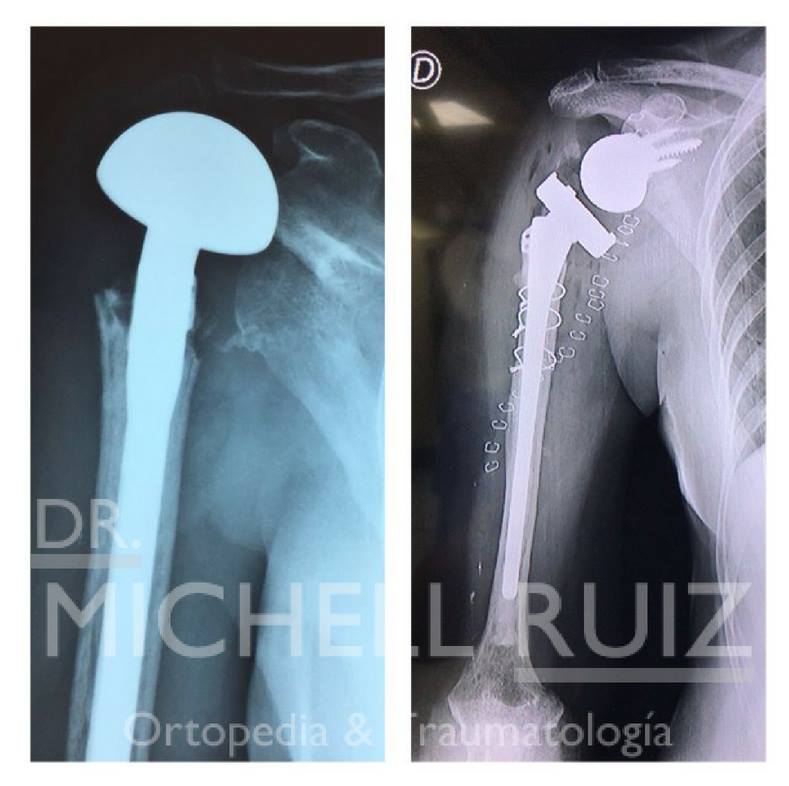Predicting adverse events, length of stay, and discharge disposition following shoulder arthroplasty: a comparison of the Elixhauser Comorbidity Measure and Charlson Comorbidity Index.
Fuente
Este artículo es publicado originalmente en:
De:
J Shoulder Elbow Surg. 2018 May 21. pii: S1058-2746(18)30209-X. doi: 10.1016/j.jse.2018.03.001. [Epub ahead of print]
Todos los derechos reservados para:
Copyright © 2018 Journal of Shoulder and Elbow Surgery Board of Trustees. Published by Elsevier Inc. All rights reserved.
Abstract
BACKGROUND:
Rising health care expenditures and the adoption of bundled-care initiatives require efficient resource allocation for shoulder arthroplasty. To determine a reliable and accessible metric for implementing perioperative care pathways, we compared the accuracy of the Elixhauser Comorbidity Measure (ECM) and Charlson Comorbidity Index (CCI) for predicting adverse events and postoperative discharge destination after shoulder arthroplasty.
MATERIALS AND METHODS:
The National Inpatient Sample was queried for patients who underwent total shoulder arthroplasty or reverse total shoulder arthroplasty between 2002 and 2014. Logistic regression models were constructed with basic demographic variables and either the ECM or the CCI to predict inpatient deaths, complications, extended length of stay, and discharge disposition. The predictive discrimination of each model was evaluated using the concordance statistic (C-statistic).
RESULTS:
We identified a total of 90,491 patients. The model incorporating both basic demographic variables and the complete set of ECM comorbidity variables provided the best predictive model, with a C-statistic of 0.867 for death, 0.752 for extended length of stay, and 0.81 for nonroutine discharge. The model’s discrimination for postoperative complications was good, with C-statistics ranging from 0.641 to 0.879.
CONCLUSION:
A predictive model using the ECM outperforms models using the CCI for anticipating resource utilization following shoulder arthroplasty. Our results may assist value-based reimbursement methods to promote quality of care and reduce health care expenditures.
KEYWORDS:
National Inpatient Sample; Shoulder arthroplasty; appropriate use; comorbidity indices; predictive analytics; resource utilization; risk stratification
Resumen
ANTECEDENTES:
El aumento de los gastos de atención de la salud y la adopción de iniciativas de atención agrupada requieren una asignación eficiente de recursos para la artroplastia de hombro. Para determinar una métrica confiable y accesible para implementar las vías de atención perioperatoria, comparamos la precisión de la Comorbilidad Medida Elixhauser (ECM) y el Índice de Comorbilidad de Charlson (CCI) para predecir los eventos adversos y el destino postoperatorio de descarga después de la artroplastia de hombro.
MATERIALES Y MÉTODOS:
La Muestra Nacional de Pacientes Internados fue consultada por pacientes sometidos a artroplastia total de hombro o artroplastia total de hombro invertida entre 2002 y 2014. Se construyeron modelos de regresión logística con variables demográficas básicas y ECM o CCI para predecir muertes hospitalarias, complicaciones, duración prolongada de la estancia y disposición de descarga. La discriminación predictiva de cada modelo se evaluó mediante la estadística de concordancia (estadístico C).
RESULTADOS:
Identificamos un total de 90,491 pacientes. El modelo que incorporó variables demográficas básicas y el conjunto completo de variables de comorbilidad ECM proporcionó el mejor modelo predictivo, con un estadístico C de 0,867 para la muerte, 0,752 para la duración prolongada de la estadía y 0,81 para la descarga no rutinaria. La discriminación del modelo para las complicaciones postoperatorias fue buena, con C-estadísticas que van desde 0,641 hasta 0,879.
CONCLUSIÓN:
Un modelo predictivo que usa ECM supera a los modelos que usan CCI para anticipar la utilización de recursos después de una artroplastia de hombro. Nuestros resultados pueden ayudar a los métodos de reembolso basados en el valor para promover la calidad de la atención y reducir los gastos de atención médica.
PALABRAS CLAVE:
Muestra nacional de pacientes hospitalizados; Artroplastia de hombro; uso apropiado; índices de comorbilidad; análisis predictivo; utilización de recursos; estratificación del riesgo
Copyright © 2018 Journal of Shoulder and Elbow Surgery Board of Trustees. Published by Elsevier Inc. All rights reserved.



 Dr. Michell Ruiz Suárez Experto en Ortopedia y Traumatología Artroscopia, Cirugía de Hombro y Codo, Cirugía de Rodilla y Lesiones Deportivas.
Dr. Michell Ruiz Suárez Experto en Ortopedia y Traumatología Artroscopia, Cirugía de Hombro y Codo, Cirugía de Rodilla y Lesiones Deportivas.


